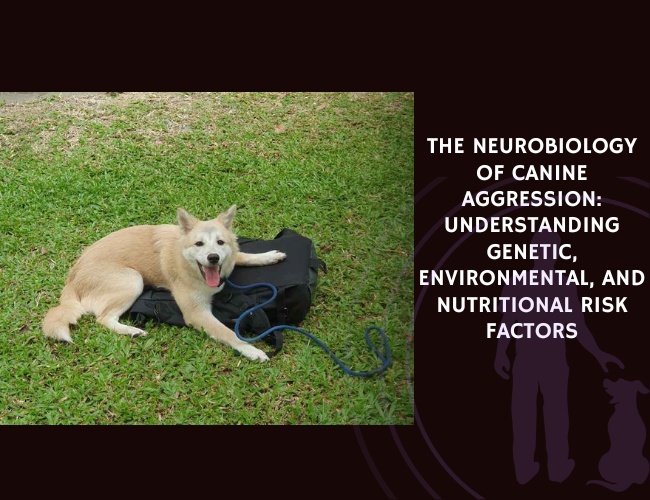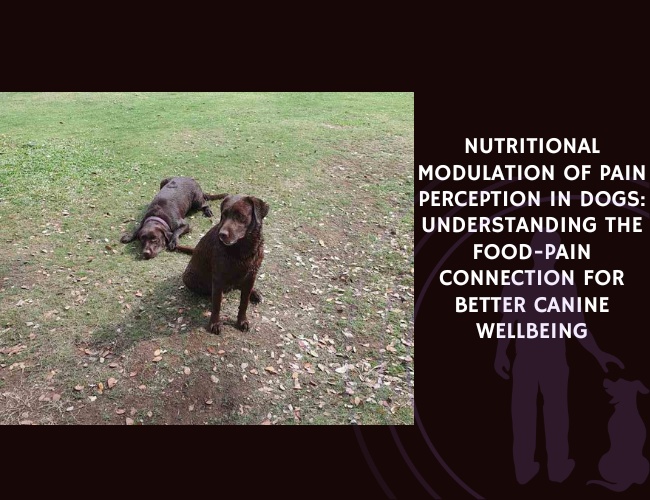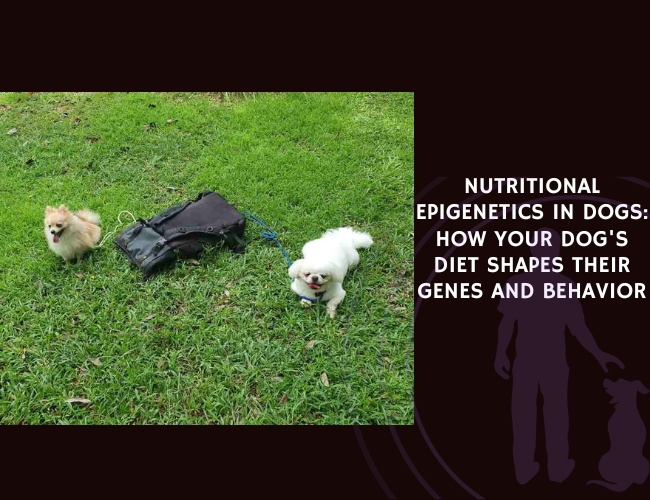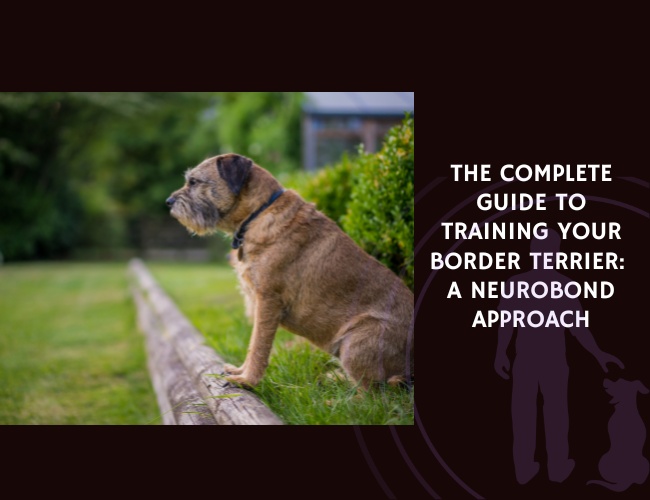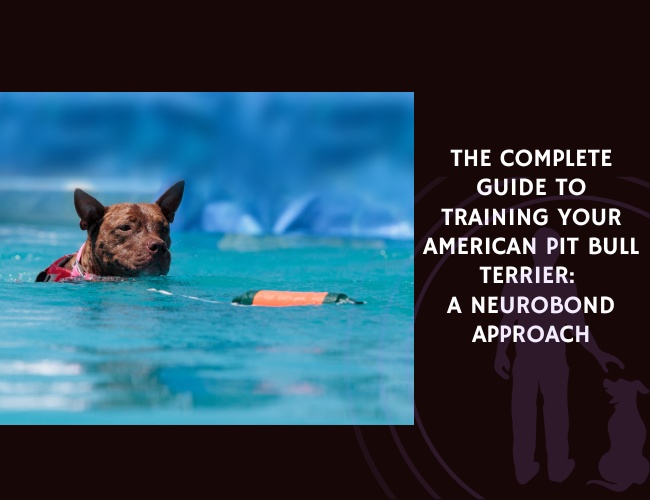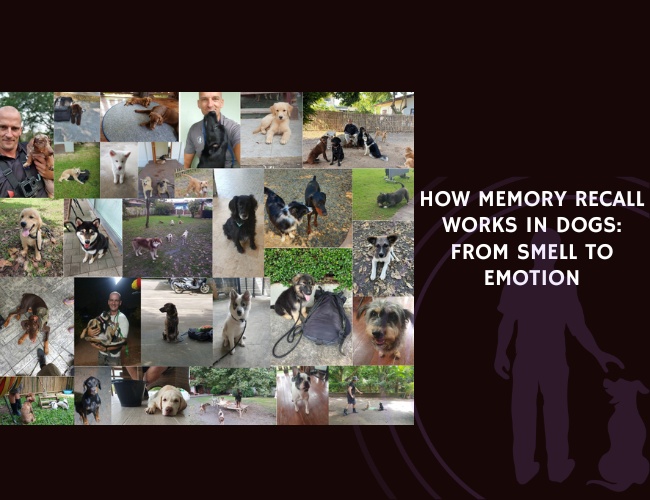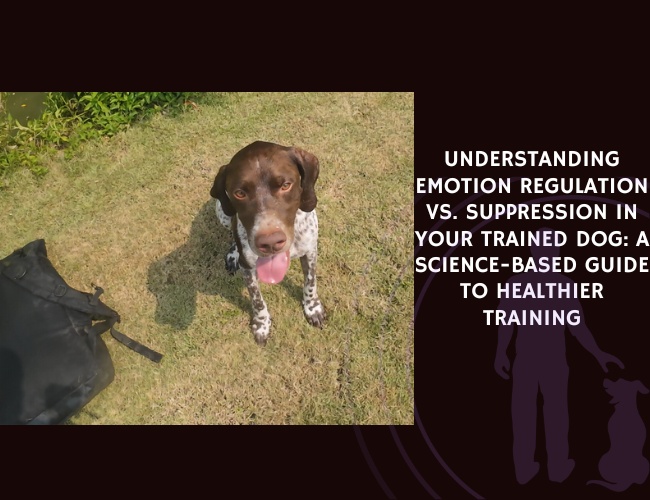Introduction: When Science Meets Your Dog’s Emotional Reality
Your dog’s aggressive behavior isn’t a character flaw—it’s a complex neurobiological phenomenon influenced by an intricate dance between genetics, environment, and nutrition. Recent groundbreaking research has revealed that aggression involves specific brain structures, hormone cascades, and even gut bacteria, fundamentally changing how we understand and approach this challenging behavior. Did you know that the same brain regions involved in human aggression, like the amygdala and its specialized neurons, are actively shaping your dog’s responses to their world?
This comprehensive guide will walk you through the latest scientific discoveries about canine aggression, from the role of somatostatin-expressing neurons to the surprising influence of your dog’s early diet. You’ll discover how maternal stress can alter puppy brain development, why certain gene variants like DRD4 and SERT matter, and how simple nutritional interventions might help calm your reactive companion. Let us guide you through this fascinating intersection where cutting-edge neuroscience meets practical solutions for your furry friend.
Brain Structures and Hormonal Orchestration
The Amygdala: Your Dog’s Emotional Command Center
Recent studies have revolutionized our understanding of how specific brain regions control aggressive behavior in mammals, including our canine companions. The amygdala—that almond-shaped structure deep in your dog’s brain—isn’t just one uniform region but contains distinct areas with specialized roles in aggression.
The Central Amygdala (CeA) acts as an intensity dial for aggressive responses. Research has shown that excessive CeA activity directly intensifies aggression, potentially escalating normal defensive behaviors to dangerous levels. When CeA neurons fire bilaterally (on both sides of the brain), the resulting aggression is qualitatively more intense than when only one side activates. Think of it as the difference between your dog giving a warning growl versus launching into a full attack—it’s the CeA’s activity level making that crucial distinction.
The Medial Amygdala (MeA) plays a different but equally important role. This region houses special neurons called somatostatin-expressing (SST+) neurons, which act as behavioral moderators. When researchers activated these SST+ neurons in studies, they could actually reverse long-term aggression and social deficits caused by early-life stress. This means your dog’s brain has built-in mechanisms for calming aggression—they just need to be functioning properly.
The Uncinate Fasciculus Connection represents another fascinating discovery. This white matter tract connects various limbic system components, and its integrity strongly correlates with social dominance measures. In studies with non-human primates, damage or underdevelopment of the right uncinate fasciculus was linked to increased submissive behaviors and altered aggressive responses. This suggests an evolutionary continuity in the neuroanatomical substrates of social behavior that extends to our dogs.
The Complex World of Hormonal Influences
Your dog’s hormones don’t just influence mood—they fundamentally alter how brain circuits function and how sensory information gets processed. Understanding this hormonal symphony helps explain why your dog might be calm one moment and reactive the next.
Corticosteroids: The Stress Response Architects
Research has revealed that corticosteroid hormones specifically bind to dopaminergic structures in the canine brain. During aggressive episodes or stress, these hormones create new functional connections between the hypothalamic-reticular-limbic brain structures. Electroencephalographic (EEG) analysis shows these changes happen in real-time, literally rewiring your dog’s brain during stressful events.
What does this mean for your dog? When they experience chronic stress, elevated corticosteroids can create lasting changes in brain connectivity. These alterations might explain why a dog who’s been through trauma continues showing aggressive responses long after the danger has passed. The brain has been functionally reorganized to prioritize threat detection and defensive responses.
Oxytocin and Vasopressin: The Social Modulators
These hormones do more than promote bonding—they actively influence aggressive behavior through a surprising mechanism: smell. Both oxytocin and vasopressin have receptors in the vomeronasal organ, your dog’s specialized structure for detecting pheromones and other chemical signals.
Peripheral oxytocin administration has been shown to:
- Reduce vomeronasal activity in response to certain scents
- Decrease aggressive behavior in male subjects
- Alter how many vomeronasal neurons activate in response to social odors
Conversely, when oxytocin receptors are blocked, the number of active vomeronasal neurons increases, potentially heightening aggressive responses. This explains why dogs with optimal oxytocin function are better at reading social cues and responding appropriately—they’re literally processing scent information differently.
The Sex Hormone and Environmental Estrogen Connection
Recent research has uncovered a concerning link between environmental estrogens (EEs) and aggressive behavior. These hormone-disrupting chemicals, found in plastics and other common materials, can fundamentally alter aggression by affecting multiple systems:
- Disrupting the hypothalamic-pituitary-interrenal (HPI) axis (similar to the HPA axis in mammals)
- Interfering with serotonin (5-HT) signaling
- Altering dopaminergic system function
This suggests that your dog’s environment—including the bowls they eat from and toys they play with—might influence their behavior through hormonal disruption. Choosing BPA-free products isn’t just about physical health; it might impact behavioral health too.
Genetic Architecture of Aggression
The Serotonin Transporter Gene (SERT/SLC6A4): A Critical Player
The serotonin transporter gene has emerged as one of the most important genetic factors in aggression. This gene controls how efficiently your dog’s brain recycles serotonin, the neurotransmitter crucial for mood regulation and impulse control.
Different variants, different behaviors:
- Dogs with L/L and LA/LA variants (higher expressing) may show different aggression patterns
- These variants affect how quickly serotonin is cleared from synapses
- Faster clearance (high expression) can lead to reduced serotonin signaling
- This reduction has been linked to increased impulsivity and aggression
Fascinatingly, research has shown that distinct behavioral phenotypes in aggressive dogs lead to variations in gut microbiome composition, with serotonin (5-HT) emerging as a potential biomarker for monitoring and diagnosing canine aggression. This means a simple gut health test might one day help identify dogs at risk for aggressive behaviors.
Studies in mice lacking the serotonin transporter entirely showed reduced aggression, which might seem counterintuitive. However, this demonstrates that both too much and too little serotonin transporter function can be problematic—it’s about finding the right balance for optimal behavioral health.
The Dopamine D4 Receptor (DRD4) Gene: The Impulsivity Factor
The DRD4 gene, particularly the 7-repeat (7r) allele variant, has been identified as another crucial genetic component in aggression. This gene doesn’t work alone—it shows epistatic interaction with the serotonin transporter gene, meaning these genes influence each other’s effects.
The DRD4-SERT interaction creates unique behavioral profiles:
- Dogs with certain combinations show increased externalizing behaviors
- The presence of DRD4 7r can alter how SERT variants affect behavior
- This interaction contributes to individual differences in stress response
- Genetic testing for both markers provides more information than either alone
Research in diverse populations, including African foraging tribes (Hadza and Datoga), has shown that DRD4 and SERT polymorphisms vary between groups with different aggression levels, suggesting these genetic factors have been shaped by evolutionary pressures related to survival and social organization.
Complex Inheritance Patterns: Why There’s No “Aggression Gene”
One crucial finding from genetic research is the absence of simple one-to-one relationships between genes and aggression. No single haplotype shows complete association with aggressive phenotypes, confirming that aggression follows a complex inheritance pattern. This discovery fundamentally changes how we approach aggressive behavior—it’s not about finding and “fixing” a single gene, but understanding an intricate web of genetic and environmental interactions.
The polygenic nature of aggression means:
- Multiple genes contribute small effects that add up to influence aggression risk
- The same genetic variant can have different effects in different dogs
- Environmental factors can activate or suppress genetic predispositions
- Epigenetic modifications can alter gene expression without changing DNA sequence
- Breed-specific genetic backgrounds influence how individual genes affect behavior
Think of it like a recipe where changing one ingredient slightly won’t ruin the dish, but altering multiple ingredients or cooking conditions can create a completely different outcome. Your dog’s genetic recipe for behavior involves hundreds of ingredients (genes) and countless cooking conditions (environmental factors).

Breed-Specific Expression: Same Genes, Different Outcomes
The form in which aggression manifests depends significantly on the breed, even when the underlying genetic variants are similar. A Border Collie with certain SERT variants might show frustrated nipping when unable to herd, while a Guardian breed with the same variants might display territorial aggression. This breed-specific expression occurs because:
Selective breeding has created unique genetic backgrounds that modify how individual genes are expressed. A gene that promotes vigilance might manifest as helpful alertness in one breed but problematic reactivity in another.
Different breeds have different behavioral thresholds programmed through generations of selection. What triggers aggression in a sensitive toy breed might not even register for a more stoic working breed. Understanding your breed’s specific tendencies helps predict how genetic factors might manifest.
Breed-typical behaviors can mask or amplify genetic predispositions. A herding breed’s natural tendency to control movement might turn into aggressive behavior when combined with anxiety-promoting genetic variants. Similarly, a breed selected for independence might show more pronounced aggression when genetic factors reduce social bonding capacity.
The Boredom-Aggression Connection: An Overlooked Trigger
Boredom emerges as one of the main triggers for aggression, yet it’s frequently overlooked or misunderstood. This isn’t simple restlessness—chronic boredom creates a neurobiological state that primes the brain for aggressive responses. Here’s what happens when your dog experiences prolonged boredom:
Dopamine dysregulation occurs when expected rewards (stimulation, interaction, activity) don’t materialize. The brain, desperately seeking stimulation, becomes hypersensitive to any potential trigger. That mailman who was merely interesting before? Now they’re a major event worthy of an aggressive display.
Stress hormones accumulate even without obvious stressors. Boredom is physiologically stressful, elevating cortisol and creating the same neurobiological conditions as chronic anxiety. Your dog isn’t choosing to be aggressive—their bored brain is in a state of stress that makes aggression more likely.
Natural behaviors become frustrated and redirected. A retriever who can’t retrieve, a terrier who can’t hunt, a shepherd who can’t herd—these dogs experience profound frustration that can manifest as aggression. The genetic drives are still there, building pressure without appropriate outlets.
The Misdiagnosis Cycle: When Boredom-Induced Aggression Goes Unrecognized
This boredom-aggression connection leads to a troubling cycle of misunderstanding and failed interventions. Because boredom doesn’t look like a typical trigger, it’s often not recognized as the root cause. Instead, we focus on the symptoms: “The dog lunges at other dogs,” “The dog guards resources,” “The dog snaps at visitors.”
The typical progression looks like this:
- Dog experiences chronic under-stimulation
- Boredom creates neurobiological conditions favoring aggression
- Aggressive behaviors emerge in various contexts
- Owners and professionals focus on the aggressive displays
- Interventions target the aggression without addressing the boredom
- Underlying boredom continues, maintaining the neurobiological state
- Aggression persists or returns despite training efforts
- Everyone becomes frustrated, reinforcing stress and aggression
We go around in circles, not understanding why it isn’t getting better. Owners become discouraged, saying “The dog does this, the dog does that,” listing problematic behaviors without recognizing the common underlying cause. The dog might be labeled as dominant, fearful, or unpredictable, when they’re actually desperately under-stimulated.
Environmental Triggers: Beyond Simple Cause and Effect
Any negative influence from the dog’s environment—with boredom being paramount—can trigger aggression in genetically susceptible individuals. But it’s not a simple switch. Environmental triggers interact with genetic predispositions in complex ways:
Cumulative stress effects: Multiple small stressors (boredom + noise + irregular schedule) can combine to exceed a dog’s genetic threshold for aggression, even when each factor alone wouldn’t cause problems.
Developmental timing matters: The same environmental trigger can have vastly different effects depending on when it occurs. Boredom during the critical socialization period might create lasting aggression tendencies, while boredom in a well-adjusted adult dog might cause only temporary irritability.
Individual variation in susceptibility: Two littermates in the same boring environment might show completely different responses based on their unique genetic combinations. One might become aggressive, another might develop anxiety, and a third might seem unaffected.
Epigenetic Modifications: How Environment Changes Gene Expression
Perhaps most remarkably, environmental factors like chronic boredom don’t just trigger existing genetic tendencies—they can actually alter how genes are expressed through epigenetic modifications. These changes don’t alter the DNA sequence itself but add chemical tags that turn genes on or off.
Chronic boredom and stress can cause:
- Methylation changes that silence genes involved in stress regulation
- Histone modifications that make aggression-related genes more accessible
- MicroRNA alterations that affect neurotransmitter production
- Transgenerational effects where stressed parents pass on aggression tendencies
This means that a dog’s boring, stressful environment can literally reprogram their genetic expression, potentially making aggression more likely not just in that individual but possibly in their offspring. The good news? Many epigenetic changes are reversible with environmental enrichment and stress reduction.
Practical Implications for Your Dog
Understanding complex inheritance patterns transforms how you approach your dog’s aggression:
Stop looking for single causes. Your dog’s aggression isn’t because they’re “dominant” or “fearful”—it’s a complex interaction of multiple genetic and environmental factors, with boredom often playing a central but hidden role.
Address boredom proactively. Before implementing complex behavior modification protocols, ensure your dog’s basic need for mental and physical stimulation is met. This might resolve aggression that seemed intractable.
Consider breed-specific needs. Your dog’s genetic background influences what constitutes adequate stimulation. A Border Collie needs different enrichment than a Basset Hound.
Think prevention across generations. If you’re breeding, know that the environment you provide affects not just your dogs but potentially their puppies’ genetic expression.
Embrace complexity in treatment. Since aggression has multiple contributing factors, successful intervention usually requires addressing genetics (through medication if needed), environment (especially boredom), and learned behaviors simultaneously.
The Critical Impact of Early Life
Maternal Stress and Fetal Programming
Your dog’s behavioral destiny begins before birth. When pregnant mothers experience stress, their elevated stress hormones cross the placental barrier and influence fetal brain development. This prenatal programming can result in puppies with:
- Altered HPA axis sensitivity
- Reduced hippocampal neurogenesis
- Changed neurotransmitter receptor densities
- Modified stress response patterns lasting into adulthood
Research has shown that maternal stress affects male and female offspring differently. A maternal low-protein diet during gestation and lactation, for instance, results in sex-specific changes in hippocampal synaptophysin expression and oxidative stress markers, with male offspring appearing more vulnerable to these nutritional insults.
The MSEW Model: Understanding Early Separation Trauma
Maternal Separation with Early Weaning (MSEW) has become the gold standard model for studying early life stress effects. This research, directly applicable to puppies separated too early from their mothers, reveals devastating neurobiological consequences:
Immediate effects of early separation:
- Decreased density of somatostatin-expressing neurons in the amygdala
- Heightened corticosterone (stress hormone) responses
- Altered body weight regulation and metabolic function
- Disrupted gut microbiome development
Long-term behavioral consequences:
- Increased intermale aggression
- Social deficits and inappropriate social responses
- Heightened anxiety and fear responses
- Reduced ability to regulate emotional responses
Particularly concerning is that MSEW effects are often sex-specific, with males showing more aggression-related changes and females displaying increased anxiety and metabolic dysfunction. This might explain why male dogs are statistically more likely to show certain types of aggression.
The Diet-Stress Interaction in Early Life
One of the most groundbreaking discoveries involves how early diet interacts with stress to shape lifelong behavior. The type of food puppies eat during the weaning period can either buffer against or exacerbate stress effects:
High-fat, high-sugar diets during early life:
- Can partially reverse some negative effects of maternal separation
- Modulate gut microbiota in ways that affect behavior
- Alter stress hormone responses
- Create metabolic changes that influence brain function
However, this relationship is complex. While some dietary modifications can be protective, combining MSEW with a Western-style diet can worsen outcomes:
- Exacerbated weight gain in males
- Increased anxiety-like behaviors
- Widespread hypersensitivity in females
- Greater susceptibility to metabolic dysfunction
This research emphasizes that puppy nutrition isn’t just about growth—it’s about brain development and future behavioral health. The source and quality of early wean diet can significantly influence the resulting stress phenotype.
Stress Response Profiles in Early Development
Research has identified distinct stress response patterns in young mammals that predict later aggression:
- ANS Responders: Show primarily autonomic nervous system activation
- Hormonal Responders: Display mainly HPA axis activation
- Mixed Responders: Exhibit both ANS and hormonal responses
Each profile correlates with different aggression trajectories during development. Understanding your puppy’s stress response type could help predict and prevent future behavioral issues.
Zoomies. Explained.
Aggression is not a choice—it’s a brain state.
Your dog’s amygdala, especially the central and medial regions, governs the intensity and regulation of aggression like a command center under pressure. Overactivation of specific neurons, or breakdowns in calming circuits, can push your dog from subtle warning to full-blown reaction. It’s not disobedience—it’s a neurological overload.
Hormones don’t just shift moods—they rewire perception.
Corticosteroids, oxytocin, and even plastic-derived estrogens alter how your dog’s brain filters social cues, scent signals, and threats.


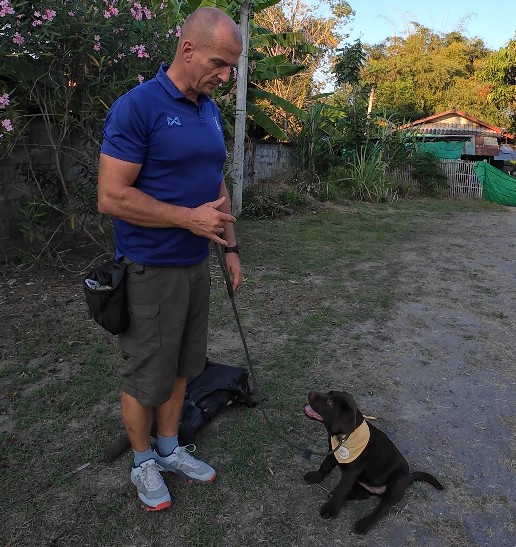
Genes are risk factors, not destiny.
Variants in serotonin and dopamine-related genes—like SERT and DRD4—interact to define behavioral thresholds and emotional control. But they’re not fixed fates.
Nutritional Interventions: Feeding for Behavioral Health
The Gut-Brain Axis in Aggression
The connection between your dog’s digestive system and their behavior is more profound than previously imagined. Research has definitively shown that aggressive dogs have distinct gut microbiome compositions compared to non-aggressive dogs, with serotonin emerging as a key biomarker linking gut health to behavior.
How gut bacteria influence aggression:
- Certain bacteria produce neurotransmitters directly
- Bacterial metabolites can cross the blood-brain barrier
- Gut inflammation triggers systemic inflammation affecting the brain
- Microbiome composition influences nutrient absorption and utilization
This means that supporting your dog’s gut health through nutrition isn’t just about digestion—it’s a direct intervention for behavioral health.
Serotonin Precursors and Synthesis Support
Since serotonin plays such a crucial role in aggression, supporting its synthesis through nutrition becomes a logical intervention. Tryptophan, the amino acid precursor to serotonin, must come from the diet as dogs cannot synthesize it.
Optimizing serotonin synthesis requires:
- Adequate tryptophan intake from quality protein sources
- Vitamin B6 as a cofactor for conversion to serotonin
- Proper timing of tryptophan-rich meals to maximize brain uptake
- Balanced amino acid ratios to prevent competition at the blood-brain barrier
Research shows that serotonin levels in aggressive dogs can be modulated through dietary intervention, though the relationship isn’t always straightforward. The presence of other amino acids, blood sugar levels, and even exercise timing can all influence how effectively dietary tryptophan converts to brain serotonin.
Omega-3 Fatty Acids: Beyond Basic Nutrition
Marine-sourced omega-3 fatty acids have emerged as powerful modulators of aggressive behavior through multiple mechanisms. Research on police dogs exposed to intensive exercise showed that dietary enrichment with marine fish improved:
- Oxidative stress markers
- Cell membrane integrity
- Inflammatory responses
- Stress resilience
The mechanisms behind omega-3’s behavioral effects:
- Incorporation into neuronal membranes improves signaling
- Anti-inflammatory effects reduce neuroinflammation
- Support for dopamine and serotonin receptor function
- Enhanced stress response regulation
The type of omega-3 matters: EPA (eicosapentaenoic acid) and DHA (docosahexaenoic acid) from marine sources are more bioavailable and effective than plant-based ALA (alpha-linolenic acid).
Novel Nutritional Approaches
Emerging research has identified several innovative nutritional strategies for managing aggression:
Microalgae supplementation provides essential amino acids, fatty acids, and minerals in highly bioavailable forms. These supplements can support neurotransmitter synthesis while providing anti-inflammatory benefits.
Cultivated meat and novel proteins are being explored not just for sustainability but for their potential to provide optimized amino acid profiles for behavioral health. These proteins can be enhanced with specific nutrients targeted at brain function.
Pulse-based and plant-forward diets influence fecal metabolites and gut health in ways that might benefit behavior, though individual dogs vary in their response to these dietary approaches.

The AAFCO Standards and Beyond
While the Association of American Feed Control Officials (AAFCO) establishes minimum nutrient requirements, these standards don’t address optimal levels for behavioral health. Research on senior dog diets has revealed significant variation in nutrient content even among AAFCO-approved foods, suggesting that meeting minimum standards doesn’t guarantee optimal behavioral support.
Key considerations beyond AAFCO standards:
- Bioavailability of nutrients, not just presence
- Ratios between nutrients (e.g., omega-6 to omega-3)
- Presence of bioactive compounds not classified as essential
- Individual variation in nutrient requirements based on genetics and health status
Comprehensive Rehabilitation Strategies
Integrating Behavioral and Biochemical Approaches
Modern aggression treatment recognizes that lasting change requires addressing both the neurobiological underpinnings and learned behavioral patterns. This integrated approach combines multiple modalities for optimal outcomes.
The multimodal treatment framework includes:
- Behavioral modification protocols
- Environmental management strategies
- Nutritional interventions
- Pharmacological support when appropriate
- Ongoing assessment and adjustment
Research has shown that combining interventions creates synergistic effects. For example, fluoxetine combined with re-socialization greatly attenuates escalated aggression more effectively than either intervention alone.
Pharmacotherapy: Precision Medicine for Aggression
Modern pharmacological approaches to aggression go beyond simple sedation, targeting specific neurobiological mechanisms underlying aggressive behavior.
Fluoxetine and SSRIs: These medications enhance neuroplasticity, creating a window for new learning. Studies show fluoxetine can:
- Increase serotonin availability in synapses
- Promote neurogenesis in the hippocampus
- Reduce amygdala hyperactivity
- Enhance the effectiveness of behavioral training
A compelling case study involved a mixed-breed dog with dissociative syndrome showing self-directed aggression. Treatment with fluoxetine and aripiprazole resulted in significant and sustained improvement, demonstrating the potential for targeted pharmacological intervention.
Novel pharmacological targets: Research has identified new therapeutic targets including:
- Neuropeptide systems (substance P, neuropeptide Y)
- Endocannabinoid system modulators
- GABA receptor agonists
- Novel serotonin receptor subtypes
Behavioral Modification: Evidence-Based Protocols
Effective behavioral modification for aggression must be grounded in understanding of the underlying neurobiology. Different aggression types require different approaches based on their neurobiological mechanisms.
For fear-based aggression (amygdala hyperactivity):
- Systematic desensitization to reduce CeA activation
- Counter-conditioning to build positive associations
- Confidence-building exercises to strengthen prefrontal control
- Predictable routines to reduce anticipatory anxiety
For frustration-based aggression (dopamine dysregulation):
- Impulse control exercises
- Delayed gratification training
- Alternative behavior training for reward-seeking
- Environmental enrichment to provide appropriate outlets
For social aggression (oxytocin/vasopressin imbalance):
- Controlled social exposure
- Positive social experiences to boost oxytocin
- Scent-based interventions to normalize vomeronasal processing
- Pack structure clarification without confrontation
Cognitive and Social-Cognitive Training
Borrowing from human psychiatric interventions, cognitive training approaches have shown promise in reducing aggression. These interventions work by:
- Strengthening prefrontal cortex control over limbic responses
- Improving cognitive flexibility
- Enhancing social cognition and empathy
- Building problem-solving skills
Practical cognitive training exercises:
- Puzzle feeders to encourage problem-solving
- Novel object exploration to build confidence
- Training chains that require planning and sequencing
- Social games that reward cooperation over competition
Environmental Optimization
Creating an environment that supports neurobiological balance is crucial for managing aggression. This goes beyond simple management to actively promoting brain health.
Neurobiologically supportive environments include:
- Predictable routines to minimize stress hormone fluctuations
- Safe spaces that allow stress recovery
- Appropriate sensory stimulation without overwhelming
- Opportunities for species-appropriate behaviors
- Minimized exposure to environmental toxins and endocrine disruptors
Research on laboratory animals has shown that enriched environments can actually reverse some effects of early life stress, increasing dendritic branching and improving behavioral flexibility. While we can’t give our dogs laboratory-controlled environments, we can apply these principles to create healing spaces.
Advanced Diagnostic and Monitoring Approaches
Biomarker Assessment
Emerging research has identified several biomarkers that can help assess and monitor aggression:
Serotonin metabolites in urine or blood can indicate serotonergic function Cortisol rhythms measured through saliva reveal HPA axis dysregulation Gut microbiome analysis can identify dysbiosis patterns associated with aggression Genetic testing for SERT and DRD4 variants informs treatment planning
These objective measures complement behavioral observation, providing a more complete picture of your dog’s neurobiological state.
Integrated Diagnostic Approaches
Comprehensive aggression assessment should include:
- Detailed behavioral history including early life experiences
- Medical examination to rule out pain or illness
- Hormonal profiling when indicated
- Nutritional assessment including gut health markers
- Environmental evaluation for stressors and toxins
- Genetic testing when available
This integrated approach ensures that all contributing factors are identified and addressed.
Special Considerations and Populations
Breed-Specific Factors
While aggression can occur in any breed, genetic research has revealed breed-specific variations in neurotransmitter systems and stress responses. Understanding your dog’s breed background helps tailor interventions:
Working breeds may have heightened dopamine sensitivity requiring specific impulse control training Guardian breeds might show territorial aggression linked to vasopressin pathways Herding breeds could display frustration-based aggression related to thwarted drive Toy breeds sometimes show fear-based aggression amplified by size-related vulnerability
Age-Related Considerations
The neurobiological basis of aggression changes across the lifespan:
Puppyhood (0-6 months): Focus on prevention through optimal nutrition, socialization, and stress minimization Adolescence (6-24 months): Address hormonal influences and provide appropriate outlets for increasing drive Adulthood (2-7 years): Maintain interventions and monitor for changes Senior years (7+ years): Consider cognitive decline, pain, and sensory changes
Sex Differences in Treatment Response
Research has consistently shown sex differences in both aggression expression and treatment response:
Males often show more benefit from serotonergic interventions Females may respond better to hormonal approaches, especially if aggression cycles with heat Neutered animals might require adjusted dosing of certain medications Early-neutered dogs could show altered stress responses requiring specialized approaches
Future Directions and Emerging Therapies
Precision Nutrition for Behavior
The future of nutritional intervention for aggression lies in personalized approaches based on individual genetics, microbiome composition, and metabolic profiles. Emerging technologies will allow us to:
- Tailor amino acid ratios to individual needs
- Select probiotics based on existing gut flora
- Adjust omega-3 dosing to inflammation markers
- Time meals for optimal neurotransmitter synthesis
Novel Therapeutic Targets
Research continues to identify new intervention targets:
Epigenetic modulation through nutrition and environment to alter gene expression Microbiome transplantation to rapidly shift gut-brain signaling Neurofeedback training to give dogs conscious control over arousal Light therapy to regulate circadian rhythms and hormone cycles Cannabinoid system modulation for anxiety and aggression management
Technology-Assisted Interventions
Emerging technologies are creating new possibilities for aggression management:
Wearable devices that detect early signs of arousal and alert handlers Virtual reality for controlled exposure therapy Apps that track triggers, progress, and medication compliance Genetic testing becoming more accessible and comprehensive Telemedicine connecting owners with specialists regardless of location
Building Your Comprehensive Management Plan
Initial Assessment Phase
Before implementing any interventions, establish a baseline understanding of your dog’s specific situation:
- Document current behaviors with video when safe
- Track patterns using a detailed behavior diary
- Identify all triggers both obvious and subtle
- Assess resources including time, finances, and support system
- Set realistic goals based on your dog’s starting point
Intervention Hierarchy
Implement interventions in a logical sequence for best results:
First Priority: Safety and Medical
- Environmental management to prevent incidents
- Veterinary examination to rule out medical causes
- Pain management if applicable
- Address any nutritional deficiencies
Second Priority: Foundation Building
- Optimize nutrition for brain health
- Establish predictable routines
- Create safe spaces for decompression
- Begin basic relationship-building exercises
Third Priority: Active Interventions
- Start behavioral modification protocols
- Consider pharmaceutical support if indicated
- Implement cognitive training exercises
- Gradually increase challenges as dog progresses
Ongoing: Maintenance and Adjustment
- Regular reassessment of progress
- Adjust protocols based on response
- Maintain gains through continued practice
- Monitor for new triggers or changes
Creating Your Support Network
Successfully managing aggression requires a team approach:
Professional team members:
- Veterinarian for medical oversight
- Veterinary behaviorist for complex cases
- Certified trainer for hands-on support
- Nutritionist for dietary optimization
Personal support system:
- Family members who understand the plan
- Friends who respect your dog’s needs
- Online communities for emotional support
- Professional counselor if stress becomes overwhelming
Remember that seeking help is a sign of dedication to your dog, not failure as an owner.
Conclusion: Integrating Science with Compassion
The neurobiology of canine aggression reveals a complex interplay between genetics, early life experiences, and ongoing environmental factors. Your dog’s aggressive behaviors stem from intricate interactions between brain structures like the amygdala, neurotransmitter systems involving serotonin and dopamine, hormonal influences from cortisol to oxytocin, and even gut microbiome composition. Understanding these mechanisms transforms aggression from a behavioral problem to a neurobiological challenge deserving of comprehensive, compassionate intervention.
The research is clear: aggression has complex inheritance patterns involving multiple genes like SERT and DRD4, can be programmed by maternal stress and early separation, and is profoundly influenced by nutrition throughout life. From the devastating effects of MSEW to the protective potential of omega-3 fatty acids, every aspect of your dog’s life contributes to their behavioral health.
But knowledge alone isn’t enough. The path forward requires integrating this scientific understanding with practical, individualized interventions. Whether through targeted nutrition providing tryptophan and B6 for serotonin synthesis, pharmaceutical support with SSRIs to enhance neuroplasticity, or behavioral modification addressing specific neurobiological mechanisms, success comes from addressing all contributing factors.
Your dog’s aggression doesn’t define them any more than a medical condition would. With the comprehensive understanding provided by modern neuroscience, combined with evidence-based interventions and unwavering compassion, even dogs with significant aggressive behaviors can experience improvement. Some may achieve complete resolution, others will need lifetime management, but all deserve our commitment to understanding and addressing their neurobiological needs.
As research continues revealing new mechanisms and interventions, from microbiome modulation to epigenetic therapies, the future holds even more promise. But today, armed with current knowledge about the neurobiological basis of aggression, you can begin creating a comprehensive plan that addresses your individual dog’s needs. The journey may be challenging, but science lights the path forward, and your dedication to understanding and helping your companion makes all the difference. 🐾
The integration of neuroscience, nutrition, and behavior offers hope where once there was only frustration. Your dog’s brain is remarkably plastic, capable of forming new connections and patterns throughout life. With patience, the right interventions, and a deep understanding of the underlying biology, you’re not just managing aggression—you’re supporting your dog’s neurobiological health and giving them the best chance at a balanced, fulfilling life. 🧡

